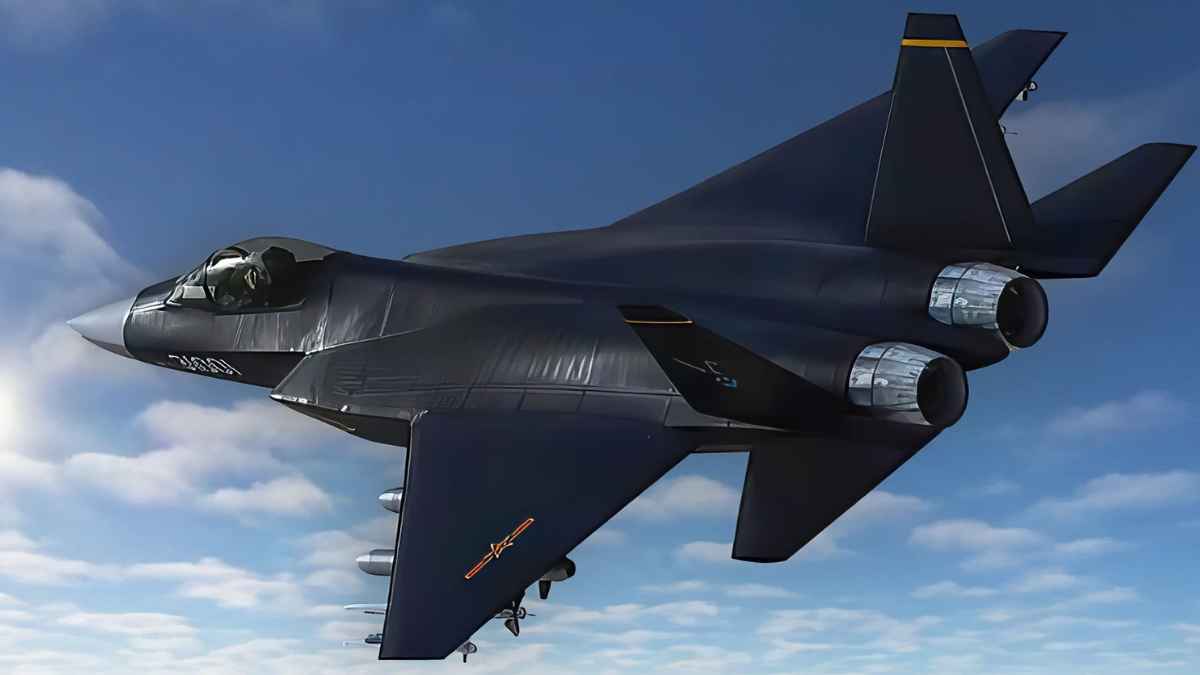China has set off alarm bells around the world with two prototype aircraft of the future stealth attack fighter. The global uproar came after these vehicles took to the skies in broad daylight this week. It could be said that this is not just another test, but a clear demonstration of the Asian country’s growing aerospace power in its attempt to match the United States.
The sightings did not take long to go viral on social networks
The designs seemed intended to cause a specific sensation. One showed a triangular aircraft, similar to the retired U.S. F-117 Nighthawk stealth fighter, albeit with some notable differences. For example, the Chengdu Aerospace Corporation prototype lacked a fin and was powered by three engines. In the videos shared, it can be seen in a low-altitude turn accompanied by a J-20 Mighthy Dragon stealth fighter.
Recent photos and videos also captured a Chinese stealth fighter prototype, attributed to Shenyang Aircraft Corporation. Such a situation fueled speculation that the aircraft could be rivals, although there is no information confirming this theory.
The sightings immediately raised questions among aviation observers. In this framework, the main question was whether these designs were stealth attack aircraft, i.e., designed to attack areas protected by air defenses, or contenders for a sixth-generation air superiority fighter. The latter is the type the U.S. is struggling to define.
“It is fascinating that the Chinese People’s Liberation Army/Communist Party Air Force has decided to fly these prototype strike aircraft in daylight,” asserted Justin Bronk, an air power expert with the UK-based RUSI Group. Through his X account, he argued that it is most likely a fifth-generation bomber/regional strike fighter project.
Department of Defense report
A Department of Defense report released in mid-December said that China is working on the development of new bombers. These air vehicles would be medium- and long-range to attack regional and global targets, posing great danger to the global landscape.
Both of China’s prototype attack aircraft appear to have a flying wing design. This element is responsible for distributing the aircraft’s load more efficiently and reduces aerodynamic drag. Such vehicles are inherently more unstable and require an automated electronic control system that constantly changes the aircraft’s flight controls.
The United States has favored this type of design with its Northrop B-2 Spirit and Northrop Grumman B-21 Raider bombers. The reason? By eliminating the tail and vertical stabilizers, the flying wing reduces the amount of surface area at the angle that can generate radar signals.
This feature represents a great advantage for fighter aircraft, which is why China also implemented it. Aircraft of this type can attack defended areas before being detected by radar.
Uncertainty in the United States
It is worth noting that China’s introduction of the attack aircraft comes amid uncertainty about the future of the sixth-generation fighter initiative in the United States. It is estimated that the costs of the Next Generation Air Dominance Program would reach millions of dollars. As a result, the Air Force decided in November to postpone key decisions on the direction of the project. This would be left to the future administration of Donald Trump.
This show of Chinese power also comes in the midst of problems with the F-5 fifth-generation fighter jet. Recall that this prototype had cost overruns and technological problems, so Trump asked Elon Musk for advice on budget cuts to advance in this matter.
When you finish reading, you can take a look at other motor news and be informed of the latest publications of this digital newspaper.







